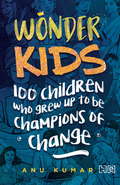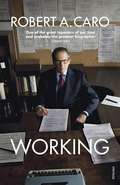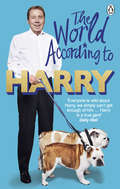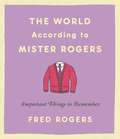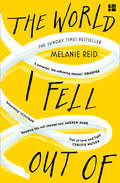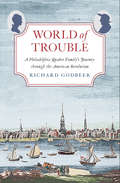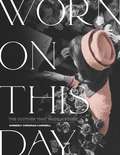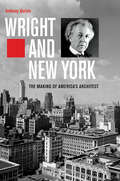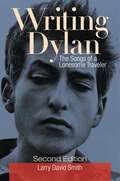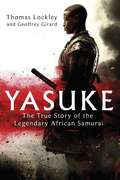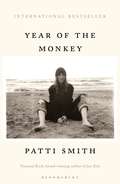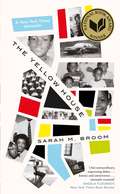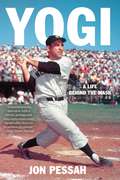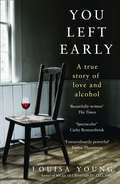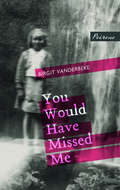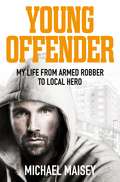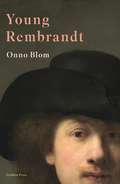- Table View
- List View
Wonderkids: 100 Children Who grew Up to Be Champions of Change
by Anu KumarMeet a hundred famous people who started small but made a big difference in the world It’s easy to forget that all the great people who shaped the world we live in – inventors, leaders, writers, actors, musicians, environmentalists, reformers, athletes and artists – were once children, just like you! That there was something – a spark, a talent, a curiosity or just a dream – which was shaped by them as they grew, and led them to become amazing achievers who inspired others to look at things in a different way. From Anne Frank to Malala Yousafzai, Marco Polo to Muhammad Yunus, Jesse Owens to Thandiwe Chama, Jagadish Chandra Bose to Albert Einstein, and Charles Darwin to Coco Chanel, Wonder Kids gives you a peek into the childhoods of icons from different walks of life. Tracing how their thoughts and actions as children had an impact on their communities or the whole world later, the compact life stories in this book have a common, shining message – that you are never too young to start to break the mould!
Working: Researching, Interviewing, Writing
by Robert A CaroRobert A. Caro, 'one of the great reporters of our time and probably the greatest biographer’ (Sunday Times), is one of the most acclaimed writers of his generation, whose biographies are widely considered to be masterpieces. In Working he offers a captivating account of his life as a writer, describing the sometimes staggering lengths to which he has gone in order to produce his books and offering priceless insights into the art and craft of non-fiction writing.Anyone interested in investigative journalism and the pursuit of truth, in the writer’s process and the creation of literature, in the art of interviewing or simply the psychology of excellence will find a masterclass in all these subjects within these pages. Readers already familiar with Caro’s work, meanwhile, will be thrilled at the revelations on offer, including how he discovered the fiercely guarded secrets of his subjects, how he constructed the pivotal scenes in his books and the fullest description yet of his forthcoming final volume of The Years of Lyndon Johnson.Including several of Caro’s most famous speeches and interviews alongside the new material, Working is the self-portrait of a man who knows the meaning and importance of great story-telling. It is, like all his books, an utterly riveting example of that too.
A Working Life: A True Story
by A. F. LodgeWork didn't necessarily define A. F. Lodge’s, but his career in chemical engineering saw him live a wonderfully rich and fascinating life. In this busy and informative memoir, Lodge not only sums up the total of his experience but elaborates on the excitement and satisfaction of an amazing journey; gratification that money can't buy. With a keen wit and raconteur's ability to entertain, Lodge leads us on a story through changing times and a variety of projects that saw him travel all over the world. With anecdotes flying across the pages underscoring culture as much as the intricacies of engineering projects, the author affords himself space to comment on more than just the work aspects. A travel compendium, autobiography and crash course on the evolution of the chemical engineering sector, Lodge has given us something eminently readable while he spends his retirement keeping active and reminiscing about A Working Life well spent.
Working With Winston
by Cita StelzerTo maintain the pace at which he worked as a parliamentarian, cabinet minister, war leader, writer and painter, Churchill required a vast female staff of secretaries, typists and others. For these women Churchill was an intimidating boss; he was a man of prodigious energy, who imposed unusual and demanding schedules on those around him, and who combined a callous-seeming disregard with sincere solicitude for their well-being. Churchill was no ordinary employer: he did not live by the clock on the office wall. He expected those who worked with and for him to live by that timetable. Despite these often unreasonable demands, Churchill inspired an enduring loyalty and affection amongst the women who worked for him. Drawing on the wealth of oral testimonies of Churchill's many secretaries held in the Churchill Archive in Cambridge, Cita Stelzer – author of Dinner with Churchill – brings to life the experiences of a legion of women whose stories have hitherto remained unpublished in journals and letters. In recapturing their memories of working for and with Churchill – of famous people met, of travels abroad, of taking dictation in non-air-conditioned aeroplanes, of working though whisky-fuelled nights – she paints an original and memorable biographical portrait of one of the twentieth century's iconic statesmen.
The World According to Harry
by Harry RedknappWhile the beautiful game has taught me a lot, becoming King of the Jungle got me thinking … I’ve had quite a life outside of football too. The World According to Harry is my take on the important things – from what makes true team spirit and not forgetting your East End roots, to the joys of jam roly-poly and knowing how lucky I am to have met a girl like Sandra.I can’t claim to be clued up on showbiz, but I’m certainly not short of a story or two. I went from causing mayhem at school to the heights of the premiership to lying in a coffin with a load of rats on national television. Life has its high points and there are always rough patches, but I’m still loving every minute. These are my lessons, laughs and legendary tales from my time in football but also as an ordinary bloke who can’t even work a pressure washer properly.
The World According to Mister Rogers: Important Things to Remember (Charming Petite Ser.)
by Fred RogersA timeless collection of wisdom on love, friendship, respect, individuality, and honesty from the beloved PBS series Mister Rogers' Neighborhood.There are few personalities who evoke such universal feelings of warmth as Fred Rogers. An enduring presence in American homes for over 30 years, his plainspoken wisdom continues to guide and comfort many. The World According to Mister Rogers distills the legacy and singular worldview of this beloved American figure. An inspiring collection of stories, anecdotes, and insights--with sections devoted to love, friendship, respect, individuality, and honesty, The World According to Mister Rogers reminds us that there is much more in life that unites us than divides us.Culled from Fred Rogers' speeches, program transcripts, books, letters, and interviews, along with some of his never-before-published writings, The World According to Mister Rogers is a testament to the legacy of a man who served and continues to serve as a role model to millions.
The World I Fell Out Of
by Melanie ReidThe Sunday Times Bestseller From the award-winning writer of The Times Magazine's 'Spinal Column': a deeply moving, darkly funny, inspirational memoir
The World of Juliette Kinzie: Chicago before the Fire (Historical Studies of Urban America)
by Ann Durkin KeatingWhen Juliette Kinzie first visited Chicago in 1831, it was anything but a city. An outpost in the shadow of Fort Dearborn, it had no streets, no sidewalks, no schools, no river-spanning bridges. And with two hundred disconnected residents, it lacked any sense of community. In the decades that followed, not only did Juliette witness the city’s transition from Indian country to industrial center, but she was instrumental in its development. Juliette is one of Chicago’s forgotten founders. Early Chicago is often presented as “a man’s city,” but women like Juliette worked to create an urban and urbane world, often within their own parlors. With The World of Juliette Kinzie, we finally get to experience the rise of Chicago from the view of one of its most important founding mothers. Ann Durkin Keating, one of the foremost experts on nineteenth-century Chicago, offers a moving portrait of a trailblazing and complicated woman. Keating takes us to the corner of Cass and Michigan (now Wabash and Hubbard), Juliette’s home base. Through Juliette’s eyes, our understanding of early Chicago expands from a city of boosters and speculators to include the world that women created in and between households. We see the development of Chicago society, first inspired by cities in the East and later coming into its own midwestern ways. We also see the city become a community, as it developed its intertwined religious, social, educational, and cultural institutions. Keating draws on a wealth of sources, including hundreds of Juliette’s personal letters, allowing Juliette to tell much of her story in her own words. Juliette’s death in 1870, just a year before the infamous fire, seemed almost prescient. She left her beloved Chicago right before the physical city as she knew it vanished in flames. But now her history lives on. The World of Juliette Kinzie offers a new perspective on Chicago’s past and is a fitting tribute to one of the first women historians in the United States.
The World of Juliette Kinzie: Chicago before the Fire (Historical Studies of Urban America)
by Ann Durkin KeatingWhen Juliette Kinzie first visited Chicago in 1831, it was anything but a city. An outpost in the shadow of Fort Dearborn, it had no streets, no sidewalks, no schools, no river-spanning bridges. And with two hundred disconnected residents, it lacked any sense of community. In the decades that followed, not only did Juliette witness the city’s transition from Indian country to industrial center, but she was instrumental in its development. Juliette is one of Chicago’s forgotten founders. Early Chicago is often presented as “a man’s city,” but women like Juliette worked to create an urban and urbane world, often within their own parlors. With The World of Juliette Kinzie, we finally get to experience the rise of Chicago from the view of one of its most important founding mothers. Ann Durkin Keating, one of the foremost experts on nineteenth-century Chicago, offers a moving portrait of a trailblazing and complicated woman. Keating takes us to the corner of Cass and Michigan (now Wabash and Hubbard), Juliette’s home base. Through Juliette’s eyes, our understanding of early Chicago expands from a city of boosters and speculators to include the world that women created in and between households. We see the development of Chicago society, first inspired by cities in the East and later coming into its own midwestern ways. We also see the city become a community, as it developed its intertwined religious, social, educational, and cultural institutions. Keating draws on a wealth of sources, including hundreds of Juliette’s personal letters, allowing Juliette to tell much of her story in her own words. Juliette’s death in 1870, just a year before the infamous fire, seemed almost prescient. She left her beloved Chicago right before the physical city as she knew it vanished in flames. But now her history lives on. The World of Juliette Kinzie offers a new perspective on Chicago’s past and is a fitting tribute to one of the first women historians in the United States.
The World of Juliette Kinzie: Chicago before the Fire (Historical Studies of Urban America)
by Ann Durkin KeatingWhen Juliette Kinzie first visited Chicago in 1831, it was anything but a city. An outpost in the shadow of Fort Dearborn, it had no streets, no sidewalks, no schools, no river-spanning bridges. And with two hundred disconnected residents, it lacked any sense of community. In the decades that followed, not only did Juliette witness the city’s transition from Indian country to industrial center, but she was instrumental in its development. Juliette is one of Chicago’s forgotten founders. Early Chicago is often presented as “a man’s city,” but women like Juliette worked to create an urban and urbane world, often within their own parlors. With The World of Juliette Kinzie, we finally get to experience the rise of Chicago from the view of one of its most important founding mothers. Ann Durkin Keating, one of the foremost experts on nineteenth-century Chicago, offers a moving portrait of a trailblazing and complicated woman. Keating takes us to the corner of Cass and Michigan (now Wabash and Hubbard), Juliette’s home base. Through Juliette’s eyes, our understanding of early Chicago expands from a city of boosters and speculators to include the world that women created in and between households. We see the development of Chicago society, first inspired by cities in the East and later coming into its own midwestern ways. We also see the city become a community, as it developed its intertwined religious, social, educational, and cultural institutions. Keating draws on a wealth of sources, including hundreds of Juliette’s personal letters, allowing Juliette to tell much of her story in her own words. Juliette’s death in 1870, just a year before the infamous fire, seemed almost prescient. She left her beloved Chicago right before the physical city as she knew it vanished in flames. But now her history lives on. The World of Juliette Kinzie offers a new perspective on Chicago’s past and is a fitting tribute to one of the first women historians in the United States.
The World of Juliette Kinzie: Chicago before the Fire (Historical Studies of Urban America)
by Ann Durkin KeatingWhen Juliette Kinzie first visited Chicago in 1831, it was anything but a city. An outpost in the shadow of Fort Dearborn, it had no streets, no sidewalks, no schools, no river-spanning bridges. And with two hundred disconnected residents, it lacked any sense of community. In the decades that followed, not only did Juliette witness the city’s transition from Indian country to industrial center, but she was instrumental in its development. Juliette is one of Chicago’s forgotten founders. Early Chicago is often presented as “a man’s city,” but women like Juliette worked to create an urban and urbane world, often within their own parlors. With The World of Juliette Kinzie, we finally get to experience the rise of Chicago from the view of one of its most important founding mothers. Ann Durkin Keating, one of the foremost experts on nineteenth-century Chicago, offers a moving portrait of a trailblazing and complicated woman. Keating takes us to the corner of Cass and Michigan (now Wabash and Hubbard), Juliette’s home base. Through Juliette’s eyes, our understanding of early Chicago expands from a city of boosters and speculators to include the world that women created in and between households. We see the development of Chicago society, first inspired by cities in the East and later coming into its own midwestern ways. We also see the city become a community, as it developed its intertwined religious, social, educational, and cultural institutions. Keating draws on a wealth of sources, including hundreds of Juliette’s personal letters, allowing Juliette to tell much of her story in her own words. Juliette’s death in 1870, just a year before the infamous fire, seemed almost prescient. She left her beloved Chicago right before the physical city as she knew it vanished in flames. But now her history lives on. The World of Juliette Kinzie offers a new perspective on Chicago’s past and is a fitting tribute to one of the first women historians in the United States.
World of Trouble: A Philadelphia Quaker Family's Journey through the American Revolution (The Lewis Walpole Series in Eighteenth-Century Culture and History)
by Richard GodbeerAn intimate account of the American Revolution as seen through the eyes of a Quaker pacifist couple living in Philadelphia Historian Richard Godbeer presents a richly layered and intimate account of the American Revolution as experienced by a Philadelphia Quaker couple, Elizabeth Drinker and the merchant Henry Drinker, who barely survived the unique perils that Quakers faced during that conflict. Spanning a half†‘century before, during, and after the war, this gripping narrative illuminates the Revolution’s darker side as patriots vilified, threatened, and in some cases killed pacifist Quakers as alleged enemies of the revolutionary cause. Amid chaos and danger, the Drinkers tried as best they could to keep their family and faith intact. Through one couple’s story, Godbeer opens a window on a uniquely turbulent period of American history, uncovers the domestic, social, and religious lives of Quakers in the late eighteenth century, and situates their experience in the context of transatlantic culture and trade. A master storyteller takes his readers on a moving journey they will never forget.
Worn on This Day: The Clothes That Made History
by Kimberly Chrisman-CampbellThis stunning visual guide is a journey of discovery through fashion's fascinating history, one day at a time.Beginning on January 1st and ending on December 31st, Worn On This Day looks at garments worn on monumental occasions across centuries, offering capsule fashion histories of everything from space suits to wedding gowns, Olympics uniforms, and armor. It creates thought-provoking juxtapositions, like Wallis Simpson's June wedding and Queen Elizabeth's June coronation, or the battered shoes Marie-Antoinette and a World Trade Center survivor wore to escape certain death, just a few calendar days apart.In every case there is a newsworthy narrative behind the garment, whether famous and glamorous or anonymous and humble. Prominent figures like Abraham Lincoln, Marilyn Monroe, and the Duchess of Cambridge are represented alongside ordinary people caught up in extraordinary events. Beautifully illustrated throughout, Worn On This Day presents a revelatory mash-up of styles, stories, and personalities.
Worn on This Day: The Clothes That Made History
by Kimberly Chrisman-CampbellThis stunning visual guide is a journey of discovery through fashion's fascinating history, one day at a time.Beginning on January 1st and ending on December 31st, Worn On This Day looks at garments worn on monumental occasions across centuries, offering capsule fashion histories of everything from space suits to wedding gowns, Olympics uniforms, and armor. It creates thought-provoking juxtapositions, like Wallis Simpson's June wedding and Queen Elizabeth's June coronation, or the battered shoes Marie-Antoinette and a World Trade Center survivor wore to escape certain death, just a few calendar days apart.In every case there is a newsworthy narrative behind the garment, whether famous and glamorous or anonymous and humble. Prominent figures like Abraham Lincoln, Marilyn Monroe, and the Duchess of Cambridge are represented alongside ordinary people caught up in extraordinary events. Beautifully illustrated throughout, Worn On This Day presents a revelatory mash-up of styles, stories, and personalities.
Wright and New York: The Making of America's Architect
by Anthony AlofsinA dazzling dual portrait of Frank Lloyd Wright and early twentieth-century New York, revealing the city’s role in establishing the career of America’s most famous architect Frank Lloyd Wright (1867–1959) took his first major trip to New York in 1909, fleeing a failed marriage and artistic stagnation. He returned a decade later, his personal life and architectural career again in crisis. Booming 1920s New York served as a refuge, but it also challenged him and resurrected his career. The city connected Wright with important clients and commissions that would harness his creative energy and define his role in modern architecture, even as the stock market crash took its toll on his benefactors. Wright denounced New York as an “unlivable prison” even as he reveled in its culture. The city became an urban foil for Wright’s work in the desert and in the “organic architecture” he promoted as an alternative to American Art Deco and the International Style. New York became a major protagonist at the end of Wright’s life, as he spent his final years at the Plaza Hotel working on the Guggenheim Museum, the building that would cement his legacy. Anthony Alofsin has broken new ground by mining the recently opened Wright archives held by Columbia University and the Museum of Modern Art. His foundational research provides a crucial and innovative understanding of Wright’s life, his career, and the conditions that enabled his success. The result is at once a stunning biography and a glittering portrait of early twentieth-century Manhattan.
Writing Dylan: The Songs of a Lonesome Traveler
by Larry David SmithThis study of Dylan's mission-driven music reveals a functional approach to art that not only sustained his 60-year career but forever changed an art form.The second edition of Writing Dylan: The Songs of a Lonesome Traveler examines Nobel Laureate Bob Dylan's historic career, yielding unique insights into a distinctively American artist's creative world. The book opens with a short biography and description of Dylan's artistic method before diving into the seven missions of his life's work. Chapters are supported by song lyrics, of which the author's license agreement with Bob Dylan Music enables a definitive presentation.Since the release of the first edition in 2005, the laureate has produced three albums of original material as well as three widely praised albums of American standards. Columbia Records has issued multiple boxed sets chronicling specific periods of Dylan's career, and several films have been made about him. Dylan himself has also given numerous speeches and interviews, often while accepting prestigious awards. This second edition not only features these new materials but draws on them to recast the first edition, presenting Dylan's music as an indelible art form.
Writing Dylan: The Songs of a Lonesome Traveler
by Larry David SmithThis study of Dylan's mission-driven music reveals a functional approach to art that not only sustained his 60-year career but forever changed an art form.The second edition of Writing Dylan: The Songs of a Lonesome Traveler examines Nobel Laureate Bob Dylan's historic career, yielding unique insights into a distinctively American artist's creative world. The book opens with a short biography and description of Dylan's artistic method before diving into the seven missions of his life's work. Chapters are supported by song lyrics, of which the author's license agreement with Bob Dylan Music enables a definitive presentation.Since the release of the first edition in 2005, the laureate has produced three albums of original material as well as three widely praised albums of American standards. Columbia Records has issued multiple boxed sets chronicling specific periods of Dylan's career, and several films have been made about him. Dylan himself has also given numerous speeches and interviews, often while accepting prestigious awards. This second edition not only features these new materials but draws on them to recast the first edition, presenting Dylan's music as an indelible art form.
Yasuke: The true story of the legendary African Samurai
by Geoffrey Girard Thomas LockleyWARRIOR. SAMURAI. LEGEND.The remarkable life of history's first foreign-born samurai, and his astonishing journey from Northeast Africa to the heights of Japanese society.The man who came to be known as Yasuke arrived in Japan in the 16th century, an indentured mercenary arriving upon one of the Portuguese ships carrying a new language, a new religion and an introduction to the slave trade. Curiously tall, bald, massively built and black skinned, he was known as a steadfast bodyguard of immense strength and stature, and swiftly captured the interest, and thence the trust, of the most powerful family in all of Japan. Two years later, he vanished.Yasuke is the story of a legend that still captures the imagination of people across the world. It brings to life a little known side of Japan - a gripping narrative about an extraordinary figure in a fascinating time and place.
Year of the Monkey
by Patti SmithFrom the National Book Award-winning author of Just Kids and M Train, a profound, beautifully realized memoir in which dreams and reality are vividly woven into a tapestry of one transformative year. Following a run of New Year's concerts at San Francisco's legendary Fillmore, Patti Smith finds herself tramping the coast of Santa Cruz, about to embark on a year of solitary wandering. Unfettered by logic or time, she draws us into her private wonderland, with no design yet heeding signs, including a talking sign that looms above her, prodding and sparring like the Cheshire Cat. In February, a surreal lunar year begins, bringing with it unexpected turns, heightened mischief, and inescapable sorrow. In a stranger's words, “Anything is possible: after all, it's the year of the monkey.” For Patti Smith - inveterately curious, always exploring, tracking thoughts, writing the year evolves as one of reckoning with the changes in life's gyre: with loss, aging, and a dramatic shift in the political landscape of America. Smith melds the Western landscape with her own dreamscape. Taking us from Southern California to the Arizona desert; to a Kentucky farm as the amanuensis of a friend in crisis; to the hospital room of a valued mentor; and by turns to remembered and imagined places - this haunting memoir blends fact and fiction with poetic mastery. The unexpected happens; grief and disillusionment. But as Patti Smith heads toward a new decade in her own life, she offers this balm to the reader: her wisdom, wit, gimlet eye, and above all, a rugged hope of a better world. Riveting, elegant, often humorous, illustrated by Smith's signature Polaroids, Year of the Monkey is a moving and original work, a touchstone for our turbulent times.
The Yellow House: WINNER OF THE NATIONAL BOOK AWARD FOR NONFICTION (National Book Award Winner Ser.)
by Sarah M. BroomA NEW YORK TIMES BESTSELLERWINNER OF THE NATIONAL BOOK AWARD FOR NONFICTION'A major book that I suspect will come to be considered among the essential memoirs of this vexing decade' New York Times Book ReviewIn 1961, Sarah M. Broom's mother Ivory Mae bought a shotgun house in the then-promising neighborhood of New Orleans East and built her world inside of it. It was the height of the Space Race and the neighborhood was home to a major NASA plant - the postwar optimism seemed assured. Widowed, Ivory Mae remarried Sarah's father Simon Broom; their combined family would eventually number twelve children. But after Simon died, six months after Sarah's birth, the house would become Ivory Mae's thirteenth and most unruly child.A book of great ambition, Sarah M. Broom's The Yellow House tells a hundred years of her family and their relationship to home in a neglected area of one of America's most mythologized cities. This is the story of a mother's struggle against a house's entropy, and that of a prodigal daughter who left home only to reckon with the pull that home exerts, even after the Yellow House was wiped off the map after Hurricane Katrina. The Yellow House expands the map of New Orleans to include the stories of its lesser known natives, guided deftly by one of its native daughters, to demonstrate how enduring drives of clan, pride, and familial love resist and defy erasure. Located in the gap between the 'Big Easy' of tourist guides and the New Orleans in which Broom was raised, The Yellow House is a brilliant memoir of place, class, race, the seeping rot of inequality, and the internalized shame that often follows. It is a transformative, deeply moving story from an unparalleled new voice of startling clarity, authority and power.
Yogi: A Life Behind the Mask
by Jon PessahThe definitive biography of Yogi Berra, the New York Yankees icon, winner of 10 World Series championships, and the most-quoted player in baseball historyLawrence "Yogi" Berra was never supposed to become a major league ballplayer. That's what his immigrant father told him. That's what Branch Rickey told him, too-right to Berra's face, in fact. Even the lowly St. Louis Browns of his youth said he'd never make it in the big leagues. Yet baseball was his lifeblood. It was the only thing he ever cared about. Heck, it was the only thing he ever thought about. Berra couldn't allow a constant stream of ridicule about his appearance, taunts about his speech, and scorn about his perceived lack of intelligence to keep him from becoming one of the best to ever play the game-at a position requiring the very skills he was told he did not have.Drawing on more than one hundred interviews and four years of reporting, Jon Pessah delivers a transformational portrait of how Berra handled his hard-earned success-on and off the playing field-as well as his failures; how the man who insisted "I really didn't say everything I said!" nonetheless shaped decades of America's culture; and how Berra's humility and grace redefined what it truly means to be a star. Overshadowed on the field by Joe DiMaggio early in his career and later by a youthful Mickey Mantle, Berra emerges as not only the best loved Yankee but one of the most appealingly simple, innately complex, and universally admired men in all of America.
You Left Early: A True Story Of Love And Alcohol
by Louisa Young‘Extraordinarily powerful’ Emma Thompson There are a million love stories, and a million stories of addiction. This one is transcendent.
You Would Have Missed Me
by Birgit Vanderbeke‘I can’t remember what it was like being born, but from what they used to tell me it seemed almost as if everything had been fine up to that point.’Standing in her family’s two-bedroom flat in the Promised Land, a little girl realizes that once again she won’t be getting a cat for her birthday. She’s been wanting one ever since she was five – all the way back to when they were living in the refugee camp. In the East, her Grandma made cakes and kept rabbits; now there is no baking, no pets and certainly no Grandma. West Germany in the early 1960s is a difficult place for a seven-year-old East German refugee, particularly when no one will listen to you.Why Peirene chose to publish this book:Today, as in the past, people flee from one country to another in the hope of finding a better future. But how do children experience such displacement? How do they cope with traumas of a refugee camp? In this novel Birgit Vanderbeke goes back to her own childhood in the divided Germany of the 1960s. She shows how the little girl she once was saved herself by imagining countries on the far side of the world. A masterpiece of memory turned into fiction.‘A hauntingly brilliant evocation of childhood.’Jackie Law, Never Imitate‘A graceful, feather-light novel whose true weight is revealed only gradually.’MDK Kultur
Young Offender
by Mr Michael MaiseyThe day he entered the notorious Feltham Young Offenders Institute, Michael Maisey was excited. He was going to be a legend to all his mates. The sixteen year old was in for attempted murder. He was innocent of this particular crime but amongst the violent and dangerous young men on his wing he was about to learn exactly how far he’d go to survive.In Young Offender we see what turned a good kid into a wanted criminal. Abused by his uncle, bullied at school, at the age of 12 he found the safety he craved in the ranks of a local gang in West London. He graduated from shoplifting to armed robbery and for five years Michael was in and out of Feltham, on a downward spiral of crime and drug and alcohol addiction. At rock bottom, he began attending AA meetings. But the road to recovery would mean changing himself in the deepest possible ways. Could Michael finally learn what it meant to be a good man?Honest and inspiring, this is a powerful story of redemption. Today Michael is a successful businessman and a loving father who spends time helping others find their way.
Young Rembrandt: A Biography
by Onno BlomAn immersive exploration of the little-known story of Rembrandt's formative years by a prize-winning biographerRembrandt's life has always been an enigma. How did a miller's son from a provincial Dutch town become the greatest artist in the world? With his formative years shrouded in mystery, the only remaining evidence of Rembrandt's life as a young man is his work.Deeply rooted in the turbulent changes that his hometown was undergoing, Rembrandt's early paintings tell a fascinating story of artistic evolution against the backdrop of the widening horizons of Leiden's cultural and commercial life during the Dutch Golden Age. Leiden's good fortune facilitated Rembrandt's. But who was that young man inventing himself as the city around him grew and prospered? How did Rembrandt become Rembrandt?To find out, Leiden native Onno Blom immersed himself in the world, the country, the city and the house in which Rembrandt was born in 1606 and where he spent the first twenty-five years of his life. The result is a fascinating portrait of the artist as a young man, rich in local and biographical detail, and restless in its efforts to seek out the roots of his genius.Onno Blom (b. 1969) is a biographer, literary critic, and columnist for de Volkskrant daily newspaper. He has published several books about writers and painters from his home city of Leiden. In 2018 he was awarded the prestigious Dutch Biography Prize for his book on the life of the sculptor, painter and novelist Jan Wolkers, which attracted controversy and became a bestseller in the Netherlands.
